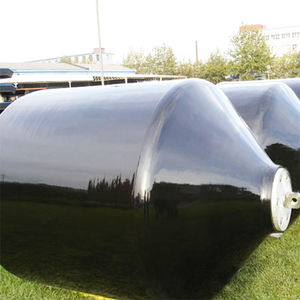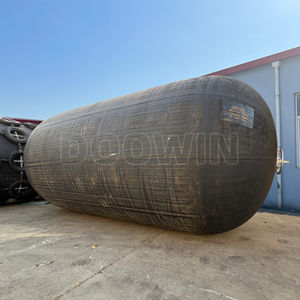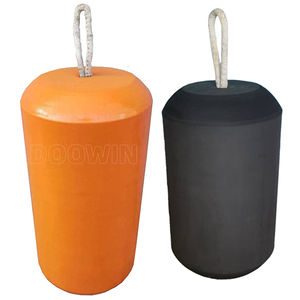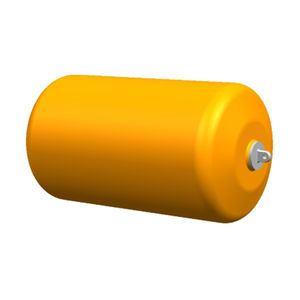
- Products
- Harbor fender
- DOOWIN - Underwater Lift Bags & Water Weight Bags
- Company
- Products
- Catalogs
- News & Trends
- Exhibitions
Harbor fender for terminalspierpile
Add to favorites
Compare this product
Characteristics
- Application domain
- for harbor, for terminals
- Applications
- pier, pile
- Configuration
- tubular, custom
- Color
- black, orange, yellow
- Other characteristics
- foam-filled, closed-cell
Description
The Donut Fender is a specific type of foam fender. It is designed to simply slip over a stationary monopile and float freely around a pile. This allows the donut fender to maintain the same attitude in the water even where extreme tidal fluctuations occur. So Donut Fenders are an effective solution for simple berthing dolphins, guiding and turning structures.
Due to its construction, the fender floats up and down a single tubular pile with fluctuating water levels and freely rotates to help align or redirect ships when vessels berth and slide along the fender. Used as a turning dolphin, donut fenders can help ‘guide’ vessels in difficult berthing situations by rotating while under compression.
The Donut Fender is designed with a 100% closed-cell cross-linked foam core. The foam is unsinkable and cannot burst or deflate. The internal steel core of the donut fender is lined with long-lasting, low-friction UHWM bearing pads which need minimal maintenance. It facilitates the rotation of the donut fender around the pile. The Donut Fender skin is durable polyurethane elastomer reinforced with continuous nylon filaments.
Our Donut Fenders are custom designed for every application. The common Donut Fenders are available in diameters from 1,270 mm to 4,220 mm and a maximum pile diameter of 610 mm to 2,388 mm. The donut foam hardness, skin thickness, pile/fender diameter, and also height of the fender can be changed on request.
Catalogs
No catalogs are available for this product.
See all of DOOWIN - Underwater Lift Bags & Water Weight Bags‘s catalogsOther DOOWIN - Underwater Lift Bags & Water Weight Bags products
Foam Filled Fenders
*Prices are pre-tax. They exclude delivery charges and customs duties and do not include additional charges for installation or activation options. Prices are indicative only and may vary by country, with changes to the cost of raw materials and exchange rates.





